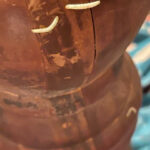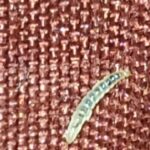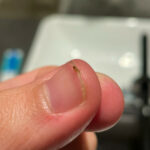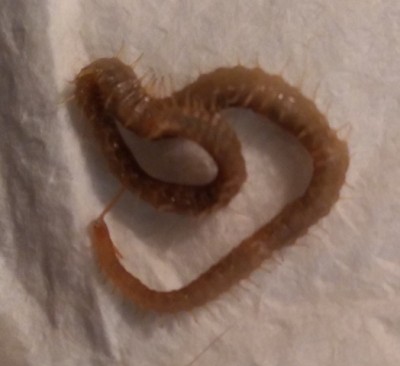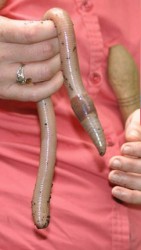If you have an odd “squirmy” feeling under the skin that doesn’t seem to go away, it could be a condition called Morgellons Disease. In addition to a squirming underneath the skin or a feeling that thin worms are crawling underneath the skin, individuals with Morgellons Disease report black threadlike materials on the skin or black specks or materials on the clothing.
According to the The Morgellons Research Foundation (MRF), “Morgellons is an unexplained and debilitating condition that has emerged as a public health concern. Recently, the Centers for Disease Control and Prevention (CDC) has received an increased number of inquiries from the public, health care providers, public health officials, Congress, and the media regarding this condition.” Individuals with Morgellons report other symptoms including:
- Biting and stinging sensations
- Granules, threads or black speck-like materials on or beneath the skin
- Skin lesions (rashes or sores)
- Fatigue
- Mental confusion
- Short term memory loss
- Joint pain
- Changes in vision
Because the symptoms can be both mentally and physically exhausting, Morgellons sufferers typically report diminished quality of life.
Regarding skin lesions, the “fibers,” (which have yet to be identified), associated with the skin lesions can be described as coenocytic (aseptate), smooth-walled, branching, filamentous objects. The elongated fibers are often twisted into balls or what appear to be bundles of fibers, as they grow within the skin. Many people refer to these bundles as fiber balls, fuzz balls, or lint balls. The fibers are clearly hyphae-like structures, and yet, do not fall within the description of known hyphae or pseudohyphae. The fibers are most often white, but are also consistently seen as blue, black, and rarely red. -Morgellons Research Foundation
While Morgellons cases can be found across the U.S., around 24% of all families registered with the Morgellons Research Foundation reside in the state of California. MRF has received the most registrations from other countries such as Canada, Australia, England, South Africa, and the Netherlands. To date, more than 13,000 families have reported that they suffer from this disease. The Morgellons Research Foundation (MRF) has received registrations from people reporting this condition from all fifty U.S. states and 45 other countries.
Treating Morgellons Disease
There is no cure for Morgellons, but doctors are attempting to treat the condition with antibiotics that address one or more candidate infectious bacteria or protozoa. In addition, the MRF states that, “most Morgellons patients, if found positive for Chlamydophila pneumonia, a Babesia species or a Borrelia species pathogenic to humans and given appropriate antibiotics long enough, resolve most symptoms.”
Morgellons Treatment Success Stories
Ginger Savely, a nurse practitioner in Austin, Texas, says she has treated 35 patients with symptoms. “Everyone tells the exact same story,” she says. “It’s just so consistent.” Savely prescribes her patients a course of broad-spectrum antibiotics. “If I knew what I was dealing with,” she says, “it would be easier to treat.” Yet, she says, her patients improve within weeks.
Other clinicians have likewise prescribed antibiotics. Dr. Raphael Stricker, a Lyme disease specialist in San Francisco, sees a handful of Morgellons patients–all of whom have tested positive for chronic Lyme disease. He thinks that Borrelia burgdorferi, the bacteria behind Lyme disease, has set his patients up for another, as-yet-unidentified, infection. And Dr. George Schwartz, a Santa Fe, N.M., trauma specialist, treats his patients with antibiotics targeted to Stenotrophomonas maltophilia–a usually harmless waterborne bacterium–and says he’s seen them improve in only 48 hours. -Popular Mechanics, June 2005 Issue
If you have symptoms of Morgellons, talk to your doctor or dermatologist immediately. If your doctor is at a loss, contact The Morgellons Research Foundation for help. They might be able to locate a physician that can help or provide information about clinical trials or studies that you can become a part of. For further write or email:
The Morgellons Research Foundation
PO BOX 357
Guilderland, NY 12084-0357
Email: co*******@Mo********.org
Website: www.morgellons.org
All About Worms is always free, always reader-supported. Your tips via CashApp, Venmo, or Paypal are appreciated! Receipts will come from ISIPP Publishing.




